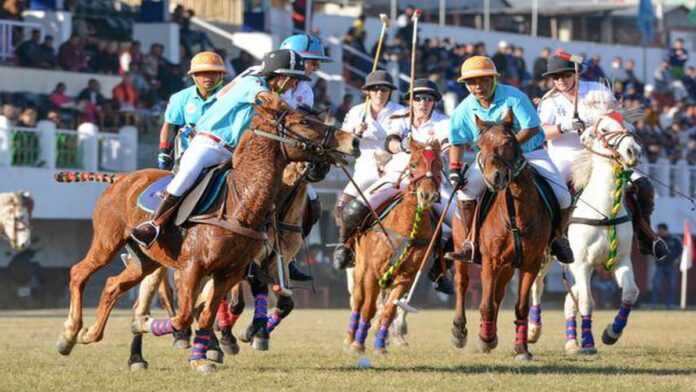In a concerning revelation from Manipur’s livestock census, it has been disclosed that 129 original Manipuri polo ponies have perished in the past 16 years, leaving only 1,089 of the iconic breeds remaining in the state.
Dwindling Population Despite Conservation Efforts
Despite the state government’s concerted efforts to conserve these ponies, the population continues to decline, presenting significant challenges for the struggling pony owners. The Manipuri polo ponies, essential to the modern sport of polo, are facing a precarious future.
Thangjam Basanta, an avid polo player and pony owner, attributes the rapid decline to multiple factors, with diminishing grazing grounds being a critical issue. The encroachment of these grounds by humans for developmental projects has exacerbated the problem, leading to an annual decline of at least eight ponies.
Contrary to the perception of polo as a wealthy sport, in Manipur, it is predominantly played by commoners facing economic challenges. Pony owners bear substantial financial burdens, aggravated by the lack of government schemes to aid in their upkeep. The absence of incentives for pony owners adds to the financial challenges, covering expenses for treatment, fodder, and stable maintenance.
Urgent Need for Grazing and Polo Grounds
Pony owners emphasize the urgent need for the revival of grazing and polo grounds to save polo and the unique pony culture in Manipur. The iconic Hapta Kangjeibung, once a polo race course and practice ground, has been inaccessible since 2011. Pony owners advocate for its restoration as a practicing ground to rejuvenate the diminishing polo culture.
The Manipur Horse Riding and Polo Association, functioning as a breeding farm for ponies, appreciated the government’s allocation of land for grazing grounds. However, there is a call for more areas to be declared as pony reserves for grazing. The absence of grazing and polo practice grounds remains a significant challenge for pony conservation.
The Manipur government introduced the “Manipur Pony Conservation and Development Policy” in 2016, offering incentives to polo clubs. However, there is a need for broader awareness starting from grassroots levels. The census figures reveal a significant decline in pony numbers, emphasizing the imperative role of awareness in pony conservation.
District-wise Breakdown of Pony Numbers
The recent livestock census provides a district-wise breakdown of pony numbers, indicating a distressing decline. Despite proposals for a mounted police unit in every police station to increase pony numbers, progress has been hindered due to the prevailing situation in Manipur.
Manipur’s original polo ponies face the threat of extinction, urgent measures are required to address the challenges faced by individual pony owners, revive grazing and polo grounds, and preserve this unique cultural and sporting heritage.




